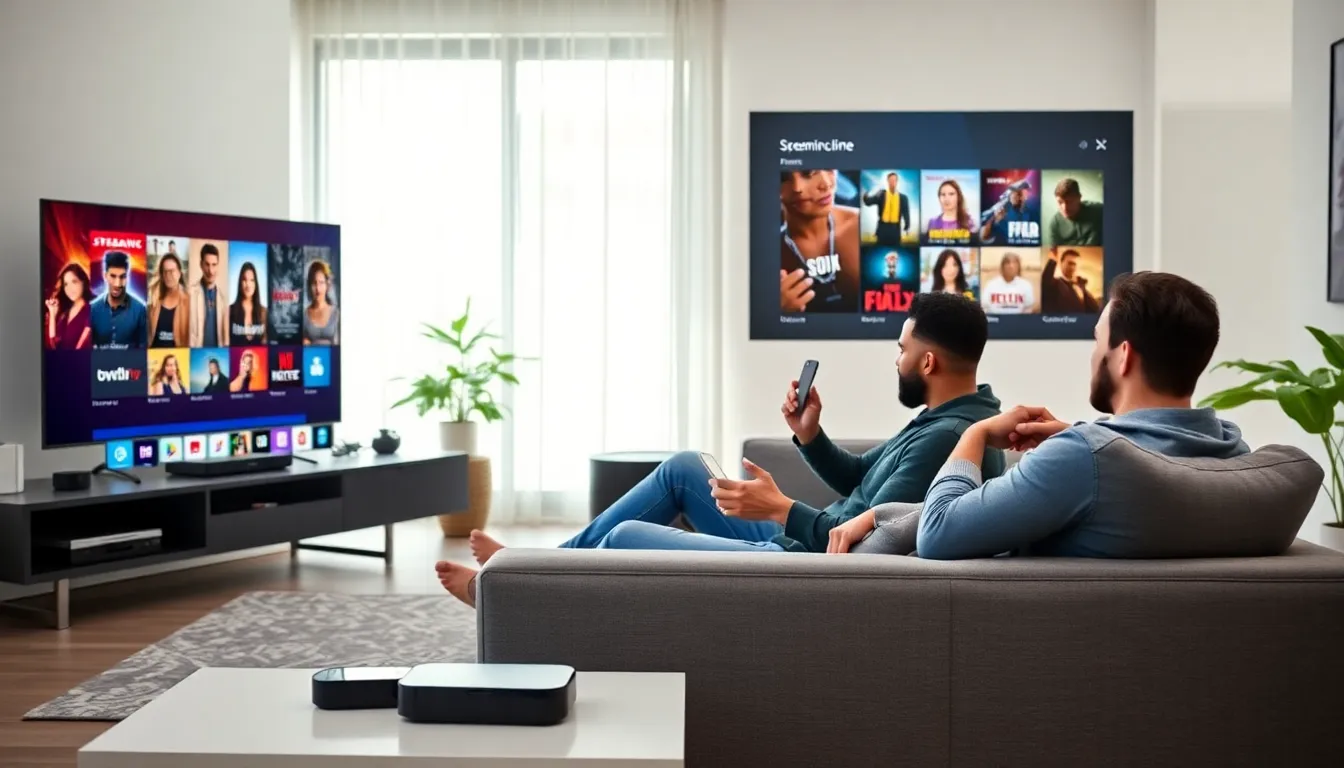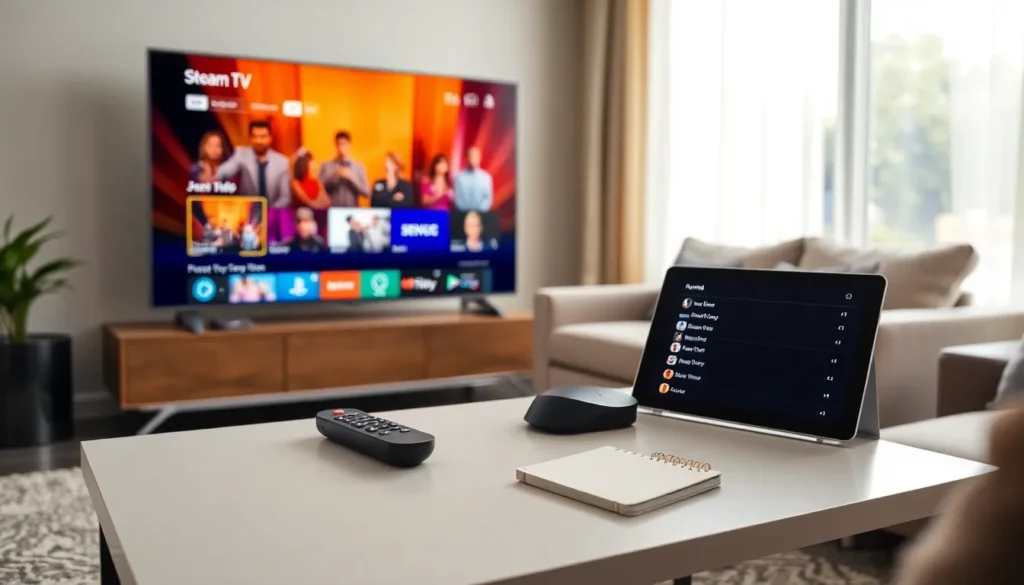In a world where binge-watching has become the norm, the thought of missing a single episode can induce sheer panic. Ever wondered how to record streaming TV shows without resorting to old-fashioned VHS tapes? Perhaps you’re tired of relying on elusive air dates and want ultimate control over your viewing experience. Fear not. This guide dives deep into the nitty-gritty of recording streaming content, covering everything from built-in features to hardware devices. So grab your remote, a snack, and let’s hit play on this informative journey.
Table of Contents
ToggleUnderstanding Streaming TV

Streaming TV has revolutionized how viewers consume content. It refers to delivering video and audio over the internet in real-time rather than via traditional cable or satellite methods. Services such as Netflix, Hulu, and Amazon Prime Video have gained immense popularity, creating a world where on-demand content is just a click away. The beauty of streaming lies in its flexibility. Users can watch shows on various devices, from smart TVs to smartphones, but this flexibility raises an important question: how does one go about recording this content for future viewing? It’s a challenge, yet with the right knowledge and tools, one can easily capture those binge-worthy moments.
Recording Options for Streaming TV
When it comes to recording streaming TV, several options are available. Let’s explore what they entail:
Using Built-In Features
Many streaming services come equipped with recording options. For instance, cloud DVR functionalities enable users to record live TV and store it in the cloud. Hulu with Live TV and YouTube TV allow subscribers to record shows for later viewing. The beauty of these built-in features lies in their simplicity. Just press record, and the show is saved for you to enjoy at your convenience. But, be mindful of storage limits and expiration policies, all good things come with terms and conditions.
Third-Party Applications
Alternatively, third-party applications can serve as a valuable asset in the quest to record streaming content. Apps like PlayOn Home and VidAngel act as intermediaries, allowing users to capture and save content from various platforms. These applications often provide additional features, such as the ability to skip ads or edit the content post-recording. It’s important to ensure the application is compatible with your streaming service of choice before diving in.
Hardware Devices for Recording
Hardware options also come into play for those who prefer a more hands-on approach to recording streaming content. Here are a few popular devices:
- Digital Video Recorders (DVRs): Devices like TiVo not only record traditional TV signals but can also integrate with streaming services. They offer an elegant solution for capturing content across multiple platforms. By connecting your DVR to the internet, users can record shows seamlessly, providing a versatile option for anyone looking to retain their favorite episodes.
- Capture Cards: For the tech-savvy audience, capture cards offer a unique solution. These devices connect your streaming device to a computer, allowing for direct recording onto your hard drive. Ideal for gamers and streamers, capture cards can also record content from consoles and setups for later playback.
Legal Considerations When Recording Streaming Content
Recording streaming TV is not just a technical challenge: it comes with its own set of legal considerations. Generally speaking, most streaming platforms have terms of service that prohibit recording content for redistribution or commercial use. This means that while individuals can record shows for personal viewing, sharing or selling that recorded content can land one in hot water. Always review the terms of each service to stay compliant and ensure a smooth viewing experience. As a rule of thumb, if you’re recording for your own enjoyment and not to profit, you’re on safer legal ground.
Tips for Effective Recording and Organization
To maximize your recording experience, a few tips can enhance your organizational game:
- Plan Ahead: Check the TV schedules for your favorite shows. Knowing when episodes air can help ensure you don’t miss crucial recording opportunities.
- Organize Your Library: Whether using built-in features or external apps, categorize your recordings. Group shows by genre or date to make searching easier down the line.
- Regular Cleanup: As tempting as it is to save every single episode, regularly review your library. Delete shows you’re unlikely to watch again to free up space.
- Use Playlists: Many services allow users to create playlists of recorded shows. This feature not only saves time but also creates a customized viewing experience.








